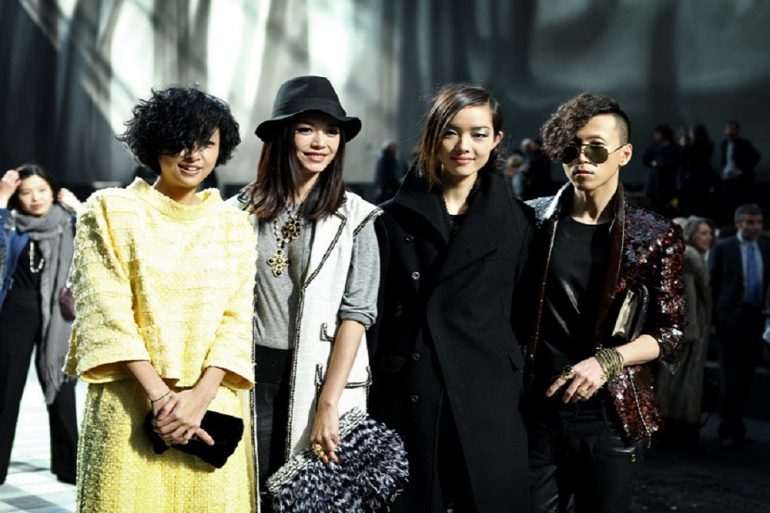When it comes to generating sales, Chinese bloggers beat their Western bloggers counterparts by a landslide. Do they really have that much more talent for creating content or selling products?
Bloggers in China have social and technological advantages for converting fans that bloggers in the West can only dream of. here, the four most crucial articles:
1. Chinese fans are OK with being sold stuff on social platforms
In the West, bloggers should be discreet about their sales pitch or completely forthright. There is no middle ground. It is kind of like bringing up money among friends — it happens inevitably, but all parties understand they are wading into awkward territory.
In China, social media and e-commerce are completely integrated into each other. In other words, social platforms have e-commerce functions, and e-commerce platforms have social functions. This makes the line between entertainment and commerce blurry.
SEE ALSO : Do Chinese fashion bloggers have a big impact on luxury brands?
As a recent article from Boston Consulting Group states : “In China, shopping is about more than just the transaction. It is about entertainment, discovery, and social engagement with friends, celebrities, and internet influencers.”
A recent study by Accenture found that up to 70% of Chinese Gen Z consumers — or those born after 1995 — prefer buying products directly via social media than other channels. The global average is 44%.
Simply put, bloggers are at the heart of the Chinese shopping experience.
People want social media platforms to entertain them. There, their favorite bloggers help them discover new products through via content.
Consumers are entertained and purchase products at the same time, and it’s all possible because Chinese social media platforms have e-commerce capabilities joined with them.
Remember: Chinese consumers value word of mouth recommendations above all else.
As long as the content is good and the bloggers trusted, they do not feel they are being used.
2. E-commerce platforms make full use of social media and bloggers
Imagine Amazon had its own version of Periscope built-in where people live streamed themselves using products while fans browsed, or Expedia had a travel-oriented version of Snapchat connected to its site.
Now you are starting to see how shopping and sharing work in tandem on the Chinese net.
Most e-commerce platforms have social functions and even their own bloggers. For example, Taobao and JD.com have integrated live streaming and articles.
SEE ALSO : Male Chinese bloggers to drive women cosmetics sales
3. Chinese bloggers have the right tools
It is no secret Western social platforms make sales inconvenient and clunky. Just look at Instagram, which does not even allow URLs in a post.
Chinese bloggers have the tools to convert followers into customers easily. Their platforms gave them these.
The most obvious example: Chinese social media apps allow product links in post copy and additionally allow consumers to open the links, view the products, put them in their shopping carts, and pay for them while still seeing the original post.
Meipai’s video sharing app has been unrolling a feature recently for content creators to put product link tags directly in their videos. Viewers can click on an overlayed tag and buy the product while still watching the video.
Live streaming platforms such as Yizhibo allow streamers to create a shopping cart of items which viewers can access and purchase by clicking an icon on the screen during the live stream.
For example, if a streamer is giving a makeup tutorial and viewers ask what products she is using, she can direct them to her cart.
“Check out my cart right here in the top right corner to learn more about the products I’m using,” makes much more likely to convert to sales than “Please find my list of products on another site.”
The first generates quick purchases, the second, bounces.
SEE ALSO : Burberry teams up with top fashion blogger for exclusive WeChat launch
4. Chinese bloggers can create custom products for their followers
In China, you will find a growing trend of bloggers creating their own products and brands.
With access to fast-react manufacturers who can offer small volumes and frequent changes to production lines, Chinese bloggers can create products their followers ask for. They can sell it themselves without relying on big brands.
Zhang Dayi is one such Chinese blogger. She is an expert at using online engagement to gauge her followers’ preferences. Her team avoids inventory overstocking by utilizing big data analytics to measure consumer sentiment towards newly released products. Their methods have been wildly successful. In 2016, Zhang’s store reportedly pulled in $46 million USD in revenue.
Chinese bloggers have an advantage. With the vast amount of resources available to them, those who understand their audience and create excellent content have the ability to not only create awareness for a brand but generate actual sales results.
(Source: Parklu)




